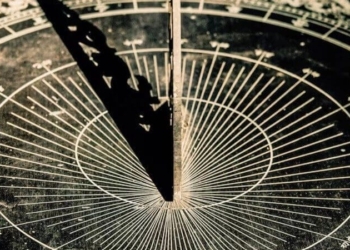Recent satellite images have revealed that Russia is secretly deploying trained dolphins to protect a key naval base on the Black Sea. Why are the Russians using marine animals for such a critical mission?
Russia’s Dolphin Training Program
After analyzing satellite images of Sevastopol—a crucial port on the Crimean Peninsula—the U.S. Naval Institute assessed that Moscow has deployed trained dolphins to safeguard their naval base in the Black Sea against potential attacks from Ukraine.
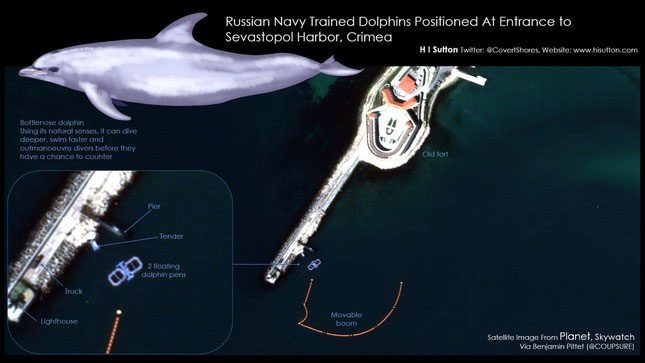
Satellite imagery is believed to have helped detect Russia’s deployment of dolphins to protect the Sevastopol naval base in the Black Sea. (Photo USNI News)
Submarine analyst H.I. Sutton noted that two dolphin pens may have been transported to Sevastopol in February, coinciding with the month Russia launched its special operation in Ukraine.
According to the Moscow Times, Russia has been training marine mammals since the Soviet era. In the late 1960s, the Soviet Union used Sevastopol as a base to train dolphins and whales for activities such as mine detection and explosive placement, and it is also believed that the Soviets trained these marine creatures to eliminate underwater targets.
However, this program was reportedly “forgotten” after the collapse of the Soviet Union in the 1990s. In 2012, Russia denied a report claiming they were developing a military training program for dolphins to attack enemy divers with head-mounted weapons.
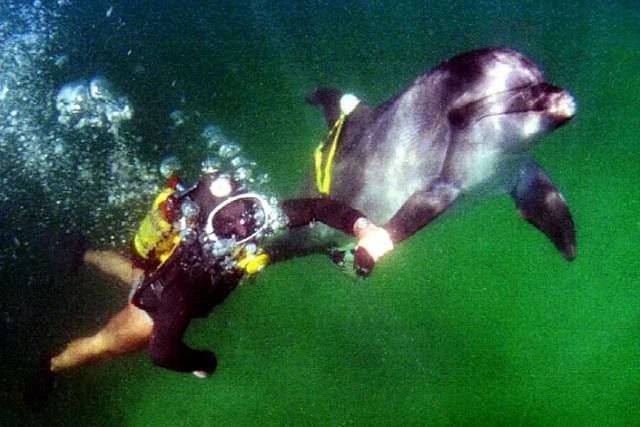
A trainer working with a dolphin that once belonged to the Soviet Navy at the Sevastopol naval base. (Photo Reuters)
Before Russia’s annexation of Crimea in 2014, the aquarium in Sevastopol—then still part of Ukraine—trained dolphins to swim with children with special needs and was used in various psychological therapy sessions.
However, after Russia annexed Crimea, including Sevastopol, an employee at the aquarium told RIA Novosti that dolphins and seals were once again being trained for military purposes.
This individual also mentioned that engineers were working to develop a training program for marine mammals to locate submerged objects and enemy divers using sonar communication systems.
In 2019, Colonel Viktor Baranets of Russia confirmed to a state television channel that: “We train military dolphins for combat roles; we do not hide this. In Sevastopol, we have a military dolphin training center to address various tasks, from analyzing the seabed to protecting a body of water, eliminating foreign divers, and attaching mines to foreign ships.”
Which Countries Train Marine Animals for Military Purposes?
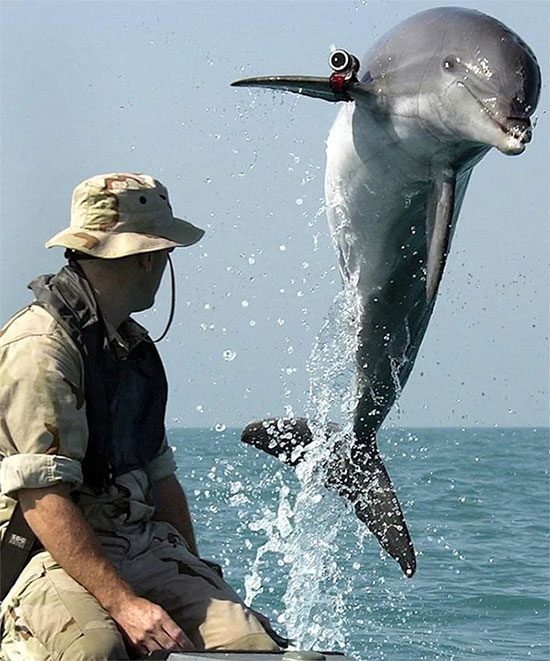
A bottlenose dolphin jumping out of the water while being trained for mine detection in the Arabian Gulf in 2003. (Brien Aho/U.S. Navy/Reuters)
There are two known military dolphin training facilities worldwide: one in Sevastopol and another at the U.S. Navy’s Naval Information Warfare Center in San Diego. The U.S. Navy has been training dolphins and sea lions since the Vietnam War.
In 1969, a project called Project Deep Ops was initiated, during which two killer whales and a pilot whale were trained to retrieve objects that sank to the ocean floor, inaccessible to machinery and divers. Marine animals like California sea lions and bottlenose dolphins have been used for underwater mine detection.
Why Dolphins, Sea Lions, or Whales?
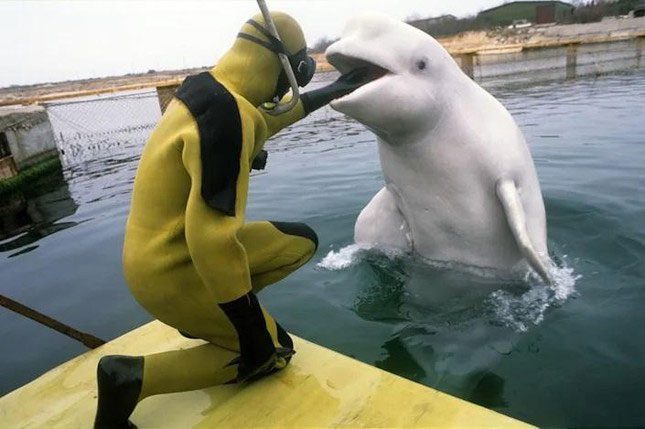
A Ukrainian military diver training marine mammals in Crimea in 1992. (Photo Getty)
There are several reasons why marine mammals like dolphins, sea lions, and whales are used for military purposes.
Due to their sonar communication systems and deep-diving capabilities, these animals operate far more effectively than any modern technology.
“It’s no surprise that President Putin and many others think of dolphins as weapons of war,” commented Andrew Lambert, a professor of naval history at King’s College London, on NBC News.
The dolphins deployed by Russia in Sevastopol, according to analyst H.I. Sutton, are likely used to prevent hostile divers from infiltrating the port and sabotaging Russian warships.
Sevastopol is the most important naval base of the Russian Navy in the Black Sea. Dolphins may be tasked with preventing Ukrainian special forces from entering the port underwater to damage the warships.
Inside the port, many high-value Russian naval vessels are positioned out of range of Ukrainian missiles but are vulnerable to sabotage from below.
“That’s their world; they will find you underwater very, very quickly,” Professor Lambert explained.








































